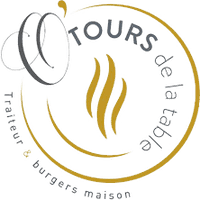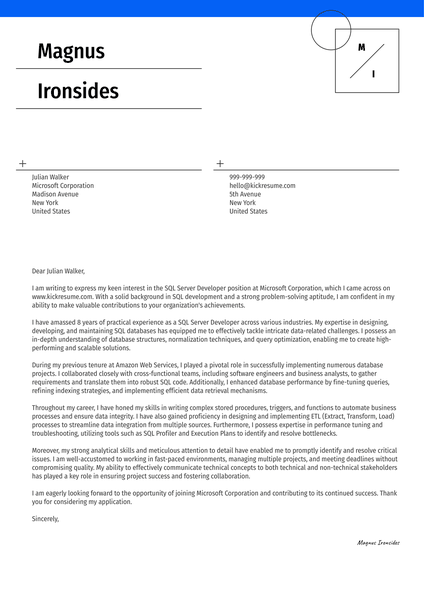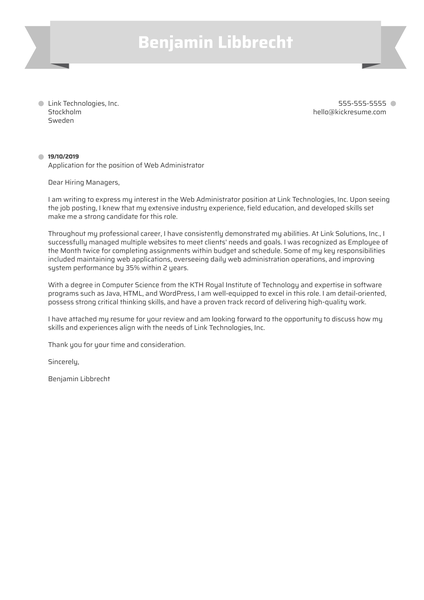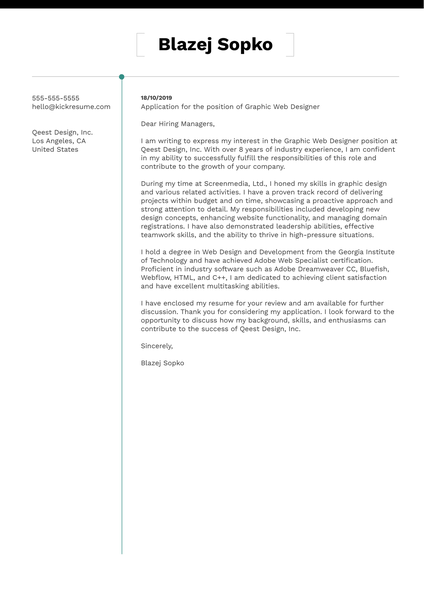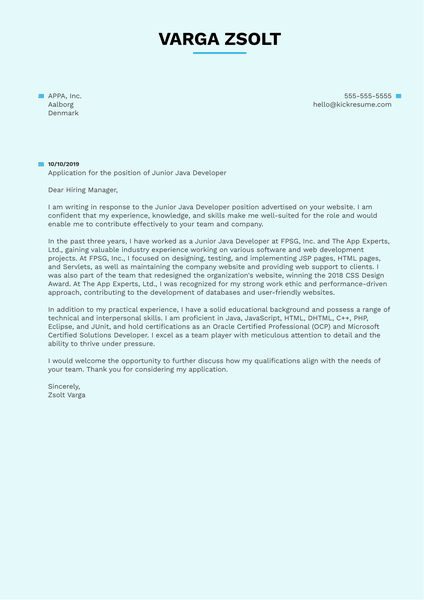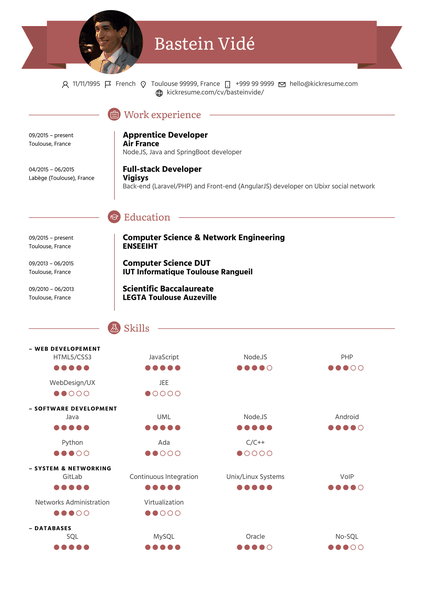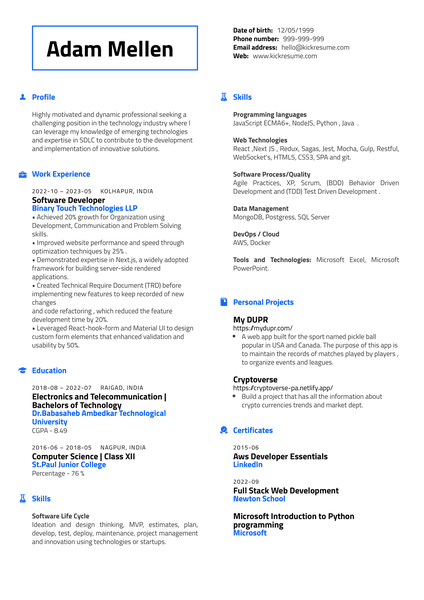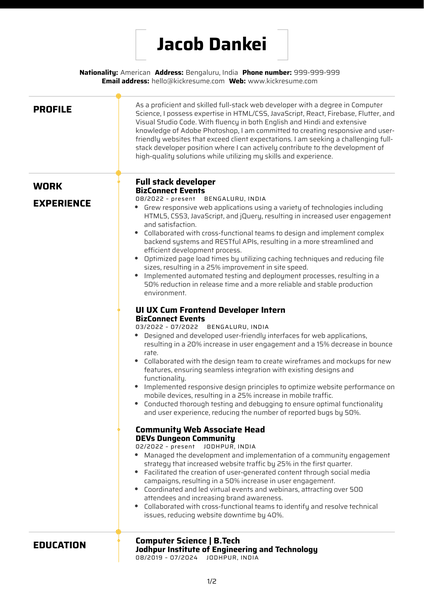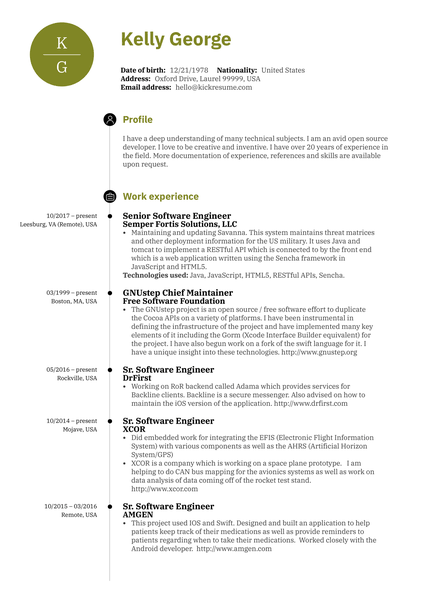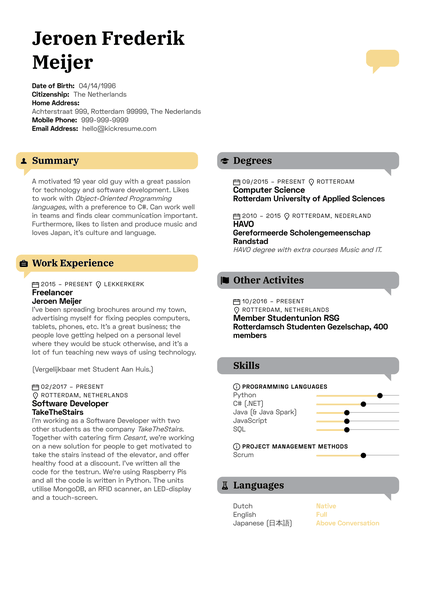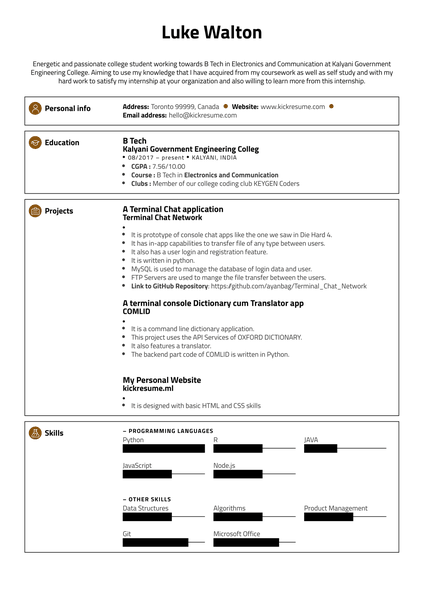How to write a fantastic cover letter as a web developer
Web developers hold a wide array of responsibilities, from optimizing the front-end user interfaces of websites to structuring the back-end HTML and other coding elements. To earn a position as a web developer, you need a cover letter that is just as optimized as the websites you build.
In this guide, we teach you 5 essential steps on how to write a fantastic cover letter as a web developer. Keep reading to learn how to:
- Format your web developer cover letter header and headline
- Tailor your web developer cover letter for specific employers
- Write an effective introduction for your web developer cover letter
- Describe your top skills and accomplishments as a web developer
- Conclude your web developer cover letter with a persuasive statement
1. Format your web developer cover letter header and headline properly
To give your cover letter a sense of visual structure and organization, your first step is to create a well-formatted header and headline.
The cover letter header refers to the block of text found in the top-center or top-left of the page. In this header is where you place your name and professional contact information. Additionally, there should be a formal letter address included with the employer that lists the company’s name and address as well.
Ensuring that your header looks visually appealing is key, as this helps to leave a strong first impression on the employer as soon as they begin reading.
Here is an example of a properly formatted web developer cover letter header
Jack Arryn, Web Developer
(123) 456-7890 | jackarryn@email.com | linkedin.com/in/jack-arryn
To: Mitchell Web Design Solutions
1234 Street Address
Salt Lake City, UT 84044
Immediately after your header comes your cover letter headline. This is a brief title statement that is no more than one sentence long and introduces the main or most important point of your letter.
In addition, your headline also serves as a tool for grabbing the employer’s attention.
When writing a headline, important components of the statement include a relevant keyword, a strong adjective or verb, and a trigger number or word that outlines how many main points the reader may find in the letter.
Here is an example of an effective headline from a web developer cover letter
My 4-Step Approach to Web Development & How My Process Can Benefit Your Company and Clients
Pro Tip: The addition of “Your Company and Clients” at the end of this headline indicates to the reader that the letter is written exclusively for them, making it more enticing overall.
2. Tailor your web developer cover letter for specific employers
Although almost all employers request a cover letter be submitted with a job application, most employers do not read the majority of these letters all the way through.
The reason behind this is that cover letters can easily become repetitive and generic. When reading a cover letter, an employer is not just looking for an explanation of your qualifications — they want to be informed of how those qualifications can benefit their specific company.
As such, it is highly important and recommended to always tailor a cover letter to the specific employer you are sending it to. By doing so, your cover letter is of much greater value to the employer and is much more likely to be read to completion.
Tailoring a cover letter requires you to research the company thoroughly beforehand and select key details that you can reference throughout the letter.
Additionally, in your research, you should search for the person who will review your letter. Once you uncover them, address them by name in what we call a personalized greeting — this will not only help in creating a strong first impression but also let them know that you have tailored the letter.
Here are 3 examples of personalized web developer cover letter greetings
- Dear Head Developer Jane Henry,
- Dear Ms. Jane Henry,
- Dear Hiring Manager Joe King,
3. Write an effective introduction for your web developer cover letter
Now that you have completed all the formatting elements and necessary research, it is time to begin writing the body text of your cover letter.
Your introductory paragraph is always one of the most important and should let the employer know as quickly and concisely as possible why you are a great candidate.
Important information to describe in a cover letter introduction can include:
- Your professional history (years of experience, industry expertise, etc.)
- Specializations you possess (including specific certifications or other special qualifications)
- A reputable professional reference (whenever possible, choose a professional reference that is a mutual acquaintance of you and the employer. Mutual acquaintances hold much greater value with employers and help you to establish immediate trust and rapport.)
Here is an example of a strong introduction from a web developer’s cover letter
Dear Head Developer Jane Henry,
I am a web developer with 8+ years of specialized experience building WordPress-based websites, e-commerce shops, and blogs. As a certified WordPress developer, I have an extensive portfolio of work that includes more than 150 different websites and templates I built from scratch. One of my recent clients, Mr. Joseph Alexander, works for your company’s corporate board and — after being highly satisfied with my work — recommended I apply for this position.
4. Describe your top skills and accomplishments as a web developer
Following your cover letter introduction are the body paragraphs of your letter in which you will provide more in-depth details about your qualifications, such as your skills and accomplishments.
As you describe these qualifications, you should consider how you can make them as relevant as possible to the employer.
For instance, let’s say one of your skills is graphic design. When describing this skill, explain how you employ it for the specific purpose of web development and how it can benefit the employer.
Remember that, in addition to keeping your statements highly relevant to the employer, they should also be concise and quantifiable. The employer should be able to easily skim through your cover letter to gain the most crucial bits of information and still walk away impressed with your professional value.
Here are 6 skills to describe in a web developer cover letter
- Coding languages (HTML, Python, JavaScript, etc.)
- Web design
- User interface design and user experience (UI and UX)
- Application testing
- Mobile optimization
- Search engine optimization
Here is an example of how to describe an accomplishment in a web developer cover letter
At [Former Employer], I worked as a lead web developer, instructing a team of 15 developers on the design, implementation, and management of more than 45 websites. As a result of my leadership and ingenuity in development, 38 of these websites won prestigious web design awards and my team was named one of the top 10 web development teams in the U.S.
5. Conclude your web developer cover letter with a persuasive statement
Conclusions are massively important components of any cover letter. In a conclusion is where you not only reiterate your excitement for the position but also provide the employer with clear instructions on how to get in contact with you.
A web developer's cover letter conclusion should include:
- The best method for contacting you (email, phone call, etc.)
- How and when the employer can best reach you (time of day, days of the week, etc.)
- If and when you plan to follow up (stating your intention to follow up can often give the employer the needed push to contact you promptly)
- A formal sign-off that is respectful and appreciative
Here is an example of a persuasive conclusion from a web developer’s cover letter
It is with great enthusiasm and appreciation that I submit this letter for your consideration. I eagerly await your response and hope to hear from you by next Tuesday regarding this position. To best reach me Monday through Friday, call me at (123) 456-7890 any time from 8 a.m. to 5 p.m., or email me at jackarryn@email.com at your earliest convenience.
I do plan to reach out via phone call next Thursday afternoon if I have yet to hear back.
Many Thanks,
[Applicant Name]
If you have ever wondered how a cover letter differs from a resume, this article will tell you everything about the key differences between the two.
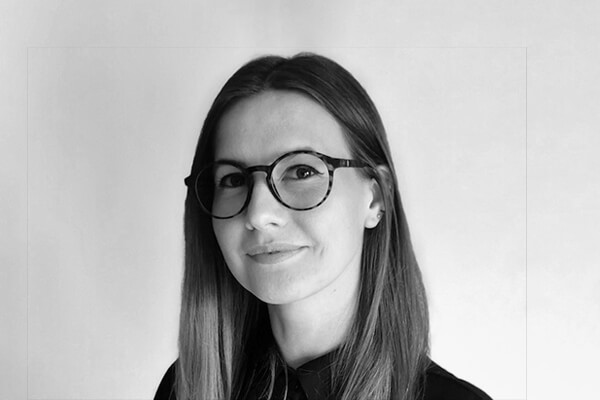
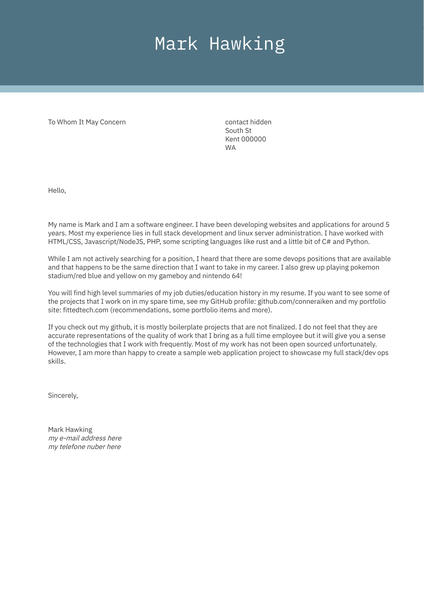
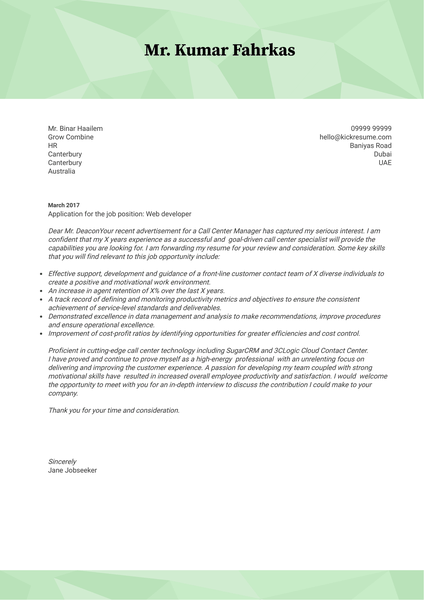

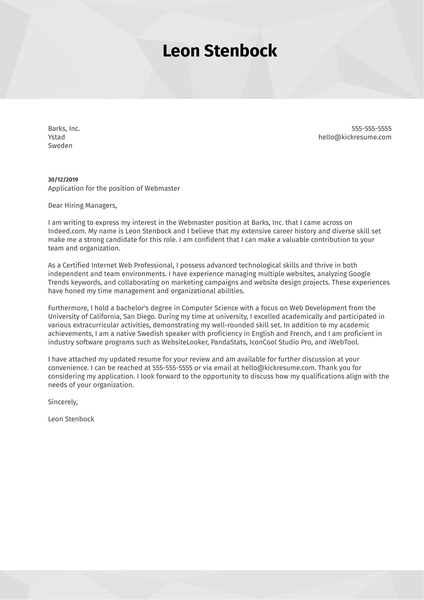
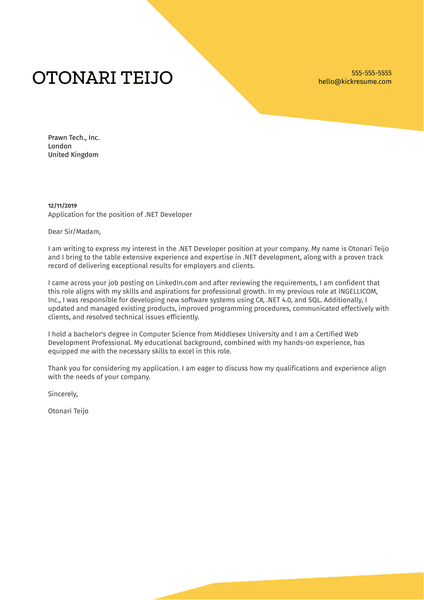


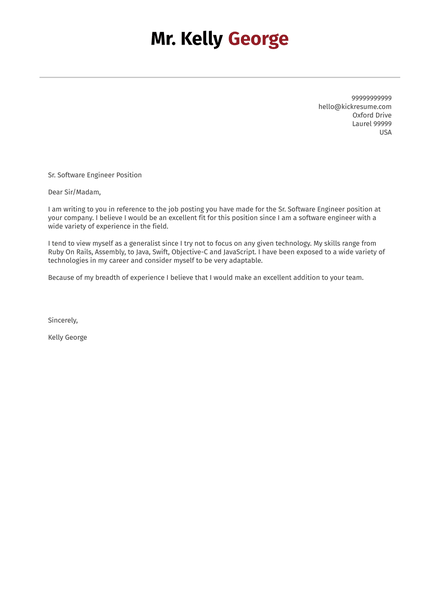
![Webmaster/webmestre Cover Letter Example [FR]](png/thumbnail-82.png)
